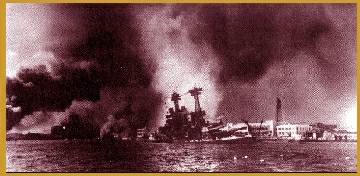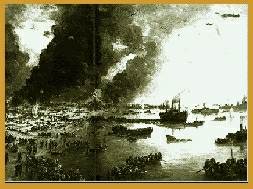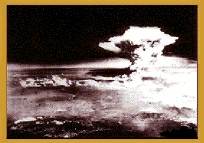|
PinkMonkey Online Study Guide-World History
15.2 Course of World War II
World War II began with Hitlerís attack on Poland
on September 1, 1939. As both Britain and France had entered into
an alliance with Poland in April 1939, they declared war upon Germany.
The Germans occupied Western Poland. The Soviet Union annexed Eastern
Poland. Lithuania, Latvia, Estonia and a part of Rumania, were invaded
and annexed by Russia, soon after.
In April 1940, Denmark and Norway were attacked
and annexed by Germany. In May 1940, Luxembourg, Belgium and Holland
were raided by German bombers. All these three states surrendered
within a week. Following this, the Germans invaded France in June
1940. Paris fell to the Nazis on June 14, 1940. Germany soon occupied
the whole of northern and western France, while Italy seized Nice
and other French districts that were adjacent to Italy.
After the fall of Poland and France, Britain alone
was at war with the Axis Powers from June 1940 to June 1941. However,
the British forces were victorious over the Axis powers in Africa.
On June 22, 1941, Russia was attacked by Germany.
The Anglo-Russian Alliance was formed on July 22, 1941, for
mutual military aid in the war against Germany. The United States
also gave the Soviet Union assurances of military help.

Exhibit 15.1
The Pearl Harbor Attack
The American fleet in Pearl Harbor, Hawaii, was
bombed by the Japanese on December 7, 1941. Hence the U.S.A. declared
war on Japan, on December 8, 1941. Germany and Italy then declared
war against the U.S.A. Prime Minister Winston Churchill of Britain,
President Franklin D. Roosevelt of the U.S.A. and Premier
Joseph Stalin of the Soviet Union mobilized their forces to
destroy the Axis powers namely, Germany, Italy, and Japan.
The Nazi and Fascist forces were successful in
their conquest of Europe, upto the end of October 1942. However
on November 8, 1942, the Allied forces succeeded against the Axis
powers in North Africa. On September 3, 1943, Italy surrendered
unconditionally and signed an armistice with the Allies on September
3, 1943.

Exhibit 15.2
The Rescue of the Allied Troops
at Dunkirk
Forging across the Rhine in March 1945, the Allied
forces defeated the German forces. As a result, Hitler lost all
hope and committed suicide on April 30, 1945. Hence, the Germans
surrendered unconditionally, on May 7, 1945. Japan continued to
battle until atom bombs were dropped on Hiroshima and Nagasaki on
August 6 and 9, 1945 respectively, by the United States. Japan finally
surrendered unconditionally on August 14, 1945, signing a document
of surrender on September 2, 1945.

Exhibit 15.3
The atom bomb exploding on Hiroshima
[next page]
|
Index
15.0 - Introduction
15.1 - Causes of World WarII
15.2 - Course of World WarII
15.3 - Consequences of World WarII
15.4 - Dates & Events
15.5 - Points to Remember
Chapter 16
|